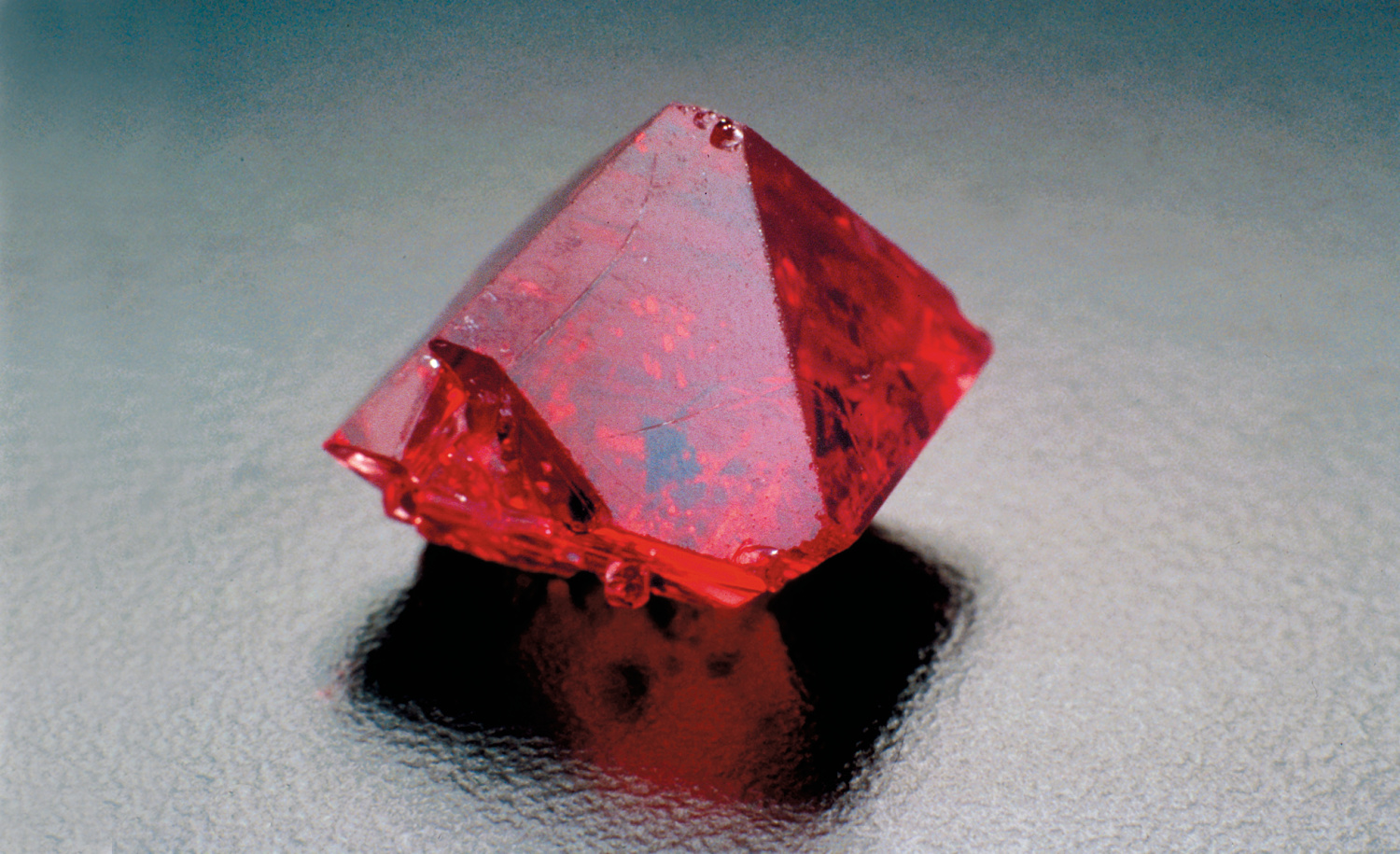- What are the factors that help you identify a gem?
- How do gemologists classify gems?
- What’s the main difference between a synthetic gem and an imitation?
As you learned in Colored Stones, most gems are minerals. A mineral is a natural, inorganic substance with a characteristic chemical composition. It also usually has a characteristic crystal structure. Inorganic materials are formed by non-living processes and are almost always solid. Chemical composition refers to the kinds and relative quantities of atoms that make up a mineral. Crystal structure is the orderly, three-dimensional, internal arrangement of those atoms.
Easily observed features like size, shape, transparency, and color aren’t consistent enough to positively identify a specific mineral. Together, chemical composition and crystal structure provide each mineral with its own unique identity and determine its optical and physical properties. These properties help you identify and grade a gem so you can assess its value.
For example, quartz comes in a range of sizes, from huge masses to tiny, wind-borne particles. Some specimens are perfectly formed crystals, while others are just lumps; some are remarkably clear, some are colored, and some are opaque. What makes these specimens quartz is their chemical composition and crystal structure. The well-formed quartz crystal and the shapeless quartz pebble have the same chemical composition and the same crystal structure, with their atoms linked together in identical geometric patterns.
Sometimes, a gem contains atoms that aren’t part of its essential chemistry. These atoms are called trace elements. Corundum’s basic chemical composition, for example, consists of aluminum and oxygen. If corundum also contains the right amounts of the trace elements iron and titanium, the result is a beautiful blue sapphire.
Some materials have no internal crystal structure or recognizable external shape. These materials, which include amber, natural and man-made glass, and plastic, are amorphous. Their atoms are randomly, rather than regularly, arranged.
It’s important to remember that most minerals are crystals, but not all crystals are minerals. A crystal is a solid material with an orderly, repetitive internal arrangement of atoms. Synthetic crystals have that internal order, but because they’re manmade, they can’t be classified as minerals.
The definition of mineral also doesn’t include organic materials, which are produced by, or derived from, living organisms. Some, like wood, shells, pearls, coral, teeth, and bones, come from living plants and animals. Others, like jet and amber, are the altered remains of living things.






